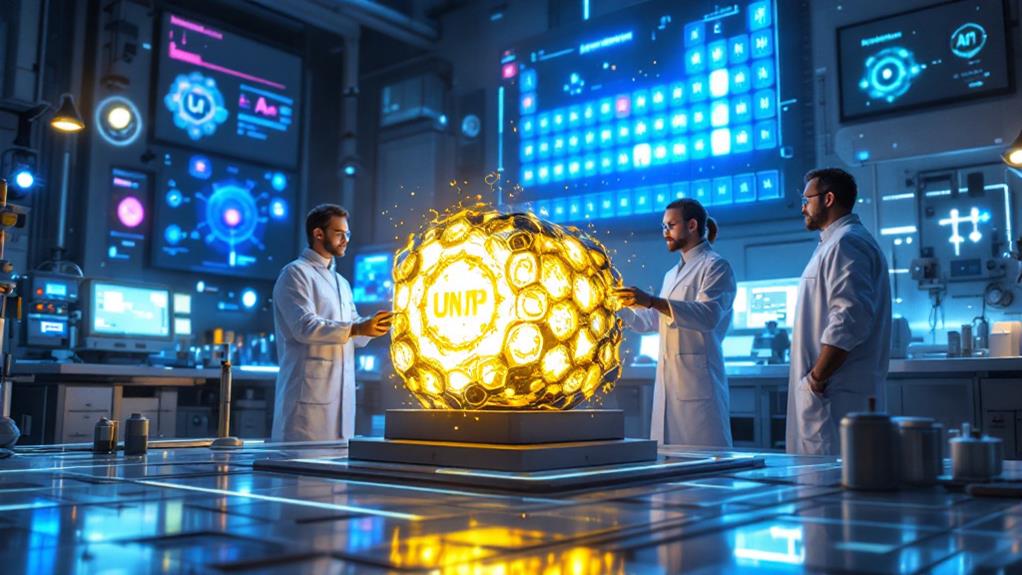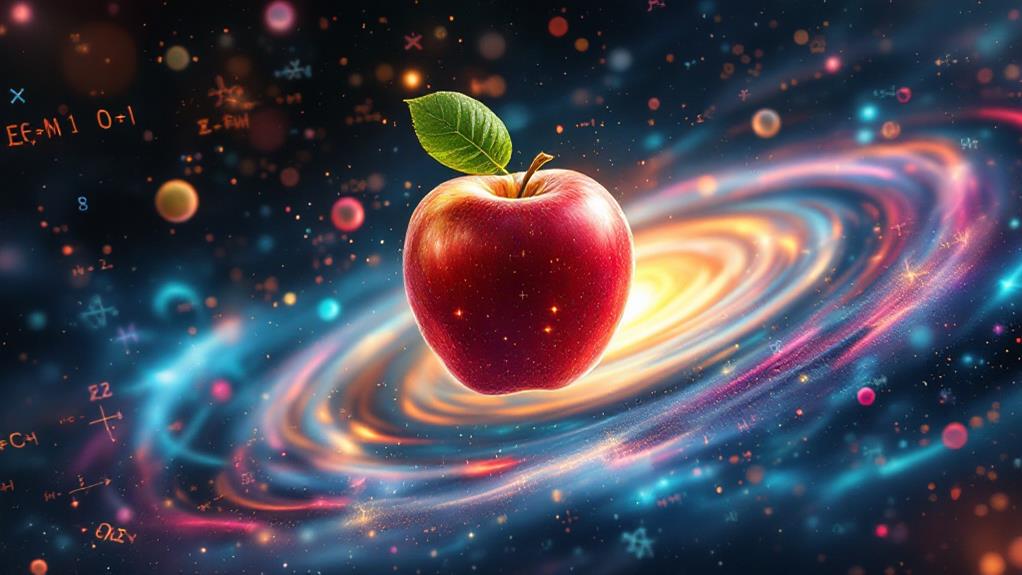What Are the Different Types of Crystals? A Beginner’s Guide to Crystal Science
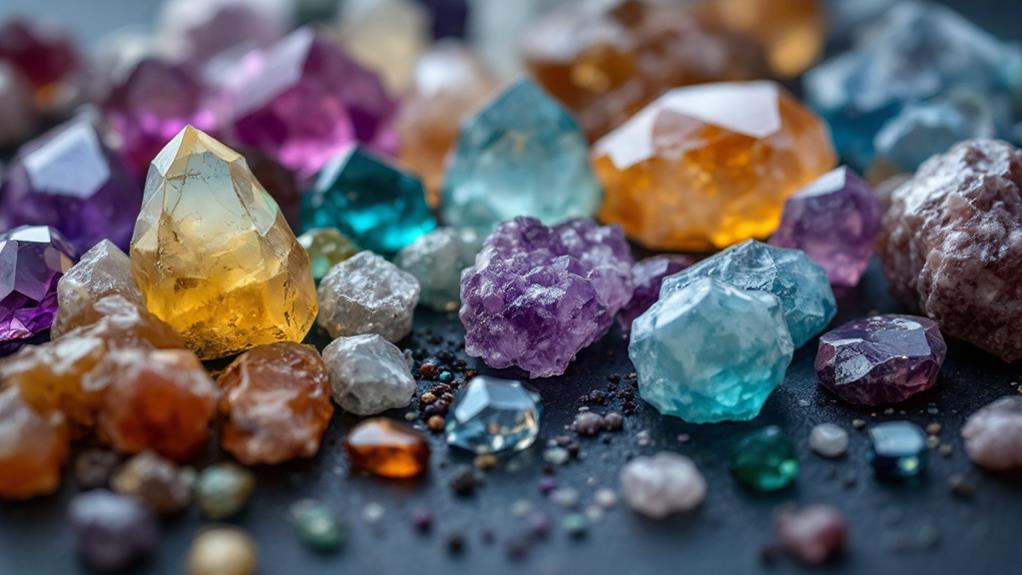
Crystals come in a stunning array of types, each with unique properties and formations. You'll encounter seven main crystal systems: cubic, tetragonal, orthorhombic, hexagonal, monoclinic, triclinic, and trigonal. These systems encompass igneous crystals like quartz and feldspar, sedimentary varieties such as calcite and gypsum, and metamorphic classifications including garnet and staurolite. Gemstone crystals like diamonds and rubies allure with their beauty, while industrial crystals power modern technology. Some believe in the healing properties of crystals, using them for metaphysical purposes. To truly appreciate the diverse world of crystals, you'll want to investigate their fascinating structures, formations, and applications in greater depth.
Understanding Crystal Formation
Three key factors contribute to crystal formation: supersaturation, nucleation, and growth. Supersaturation occurs when a solution contains more dissolved solute than it can typically hold under normal conditions. This unstable state sets the stage for crystal formation. Nucleation is the initial step where tiny clusters of molecules or atoms come together to form the foundation of a crystal. These nuclei act as seeds for further growth.
Once nucleation occurs, the crystal enters the growth phase. Molecules or atoms in the surrounding solution attach to the nucleus, gradually building the crystal structure. The rate and pattern of growth determine the crystal's final shape, known as its crystal habit. You'll find various habits, including cubic, octahedral, and prismatic forms.
Crystal color is another important characteristic influenced by formation conditions. Impurities, structural defects, or trace elements can affect a crystal's color. For example, the presence of chromium gives rubies their distinctive red hue. Understanding these processes helps you appreciate the diversity of crystals you encounter and provides perspective into their unique properties and appearances.
The Seven Crystal Systems
When you're exploring the world of crystals, you'll encounter seven fundamental crystal systems that categorize their internal structures. These systems are based on the crystal geometry and symmetry of their atomic arrangements.
The cubic system is the most symmetrical, with equal-length axes at right angles. You'll find pyrite and garnets in this group. The tetragonal system has three axes at right angles, but one is longer, as seen in zircon crystals. The orthorhombic system has three unequal axes at right angles, exemplified by topaz.
In the hexagonal system, you'll see six-sided crystals like quartz, with four axes - three equal horizontal axes and one vertical. The trigonal system, often grouped with hexagonal, includes crystals like tourmaline. The monoclinic system has three unequal axes, with one at an oblique angle, as in gypsum. Finally, the triclinic system is the least symmetrical, with three unequal axes at oblique angles, seen in turquoise.
Understanding these crystal systems helps you identify and classify crystals based on their unique structural properties and crystal symmetry.
Igneous Crystal Types
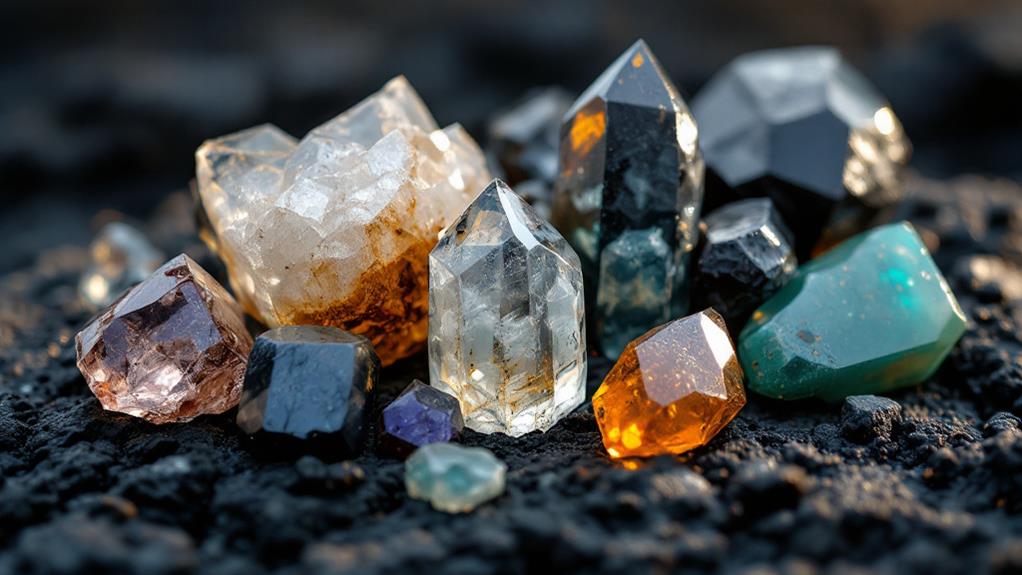
Moving from crystal systems to specific crystal types, let's investigate igneous crystals. These fascinating formations are born from molten rock or magma as it cools and solidifies. You'll find igneous crystals in various sizes, from tiny grains to large, striking specimens.
One of the most common igneous crystals you'll encounter is quartz. Quartz crystals form in a variety of igneous rocks, including granite and rhyolite. They're prized for their clarity and hexagonal shape, often appearing as translucent or colorless crystals.
Basalt crystal formations offer another intriguing example of igneous crystals. While basalt itself is fine-grained, it can contain larger crystals called phenocrysts. These may include minerals like olivine, pyroxene, or plagioclase feldspar.
Other notable igneous crystal types include feldspar, mica, and hornblende. The size and composition of these crystals depend on factors like cooling rate and chemical composition of the magma. Slower cooling typically results in larger crystals, while rapid cooling produces smaller ones. By studying these crystals, you can gain informative perspectives into the geological processes that shaped our planet's crust.
Sedimentary Crystal Varieties
Unlike their igneous counterparts, sedimentary crystals form through a different geological process. These crystals develop when dissolved minerals precipitate from water or when existing sediments are compacted and cemented together over time. You'll find that sedimentary crystals often exhibit unique crystal structures and habits due to their formation conditions.
Common sedimentary crystal varieties include calcite, gypsum, and halite. Calcite, found in limestone, displays a rhombohedral crystal structure and can form in various crystal habits, such as scalenohedral or prismatic. Gypsum, often present in evaporite deposits, typically shows a monoclinic crystal structure and may occur in tabular or needle-like habits. Halite, or rock salt, forms cubic crystals with a distinctive hopper-shaped habit.
You'll also encounter other sedimentary crystals like dolomite, barite, and celestite. These minerals can form through diagenesis or direct precipitation from water. Their crystal structures and habits are influenced by factors such as temperature, pressure, and the presence of impurities. Understanding these sedimentary crystal varieties helps you appreciate the diverse geological processes that shape our planet's crust.
Metamorphic Crystal Classifications
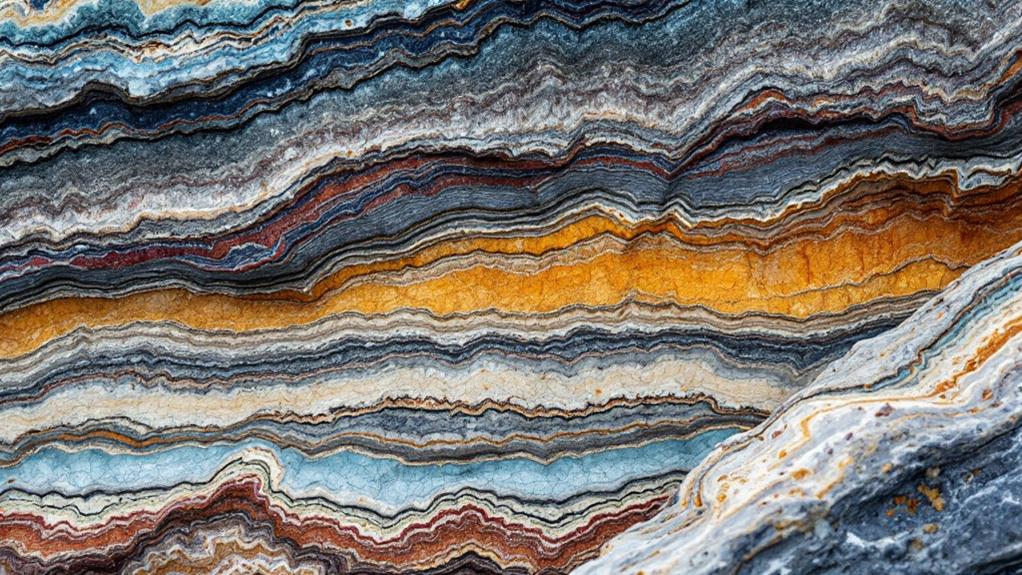
Metamorphic crystals emerge out of intense pressure and temperature changes within the Earth's crust. These transformations alter the original rock's structure and composition, creating unique metamorphic crystal structures. You'll find that metamorphic crystals often display a layered or banded appearance, reflecting the intense forces that shaped them.
When exploring metamorphic crystal classifications, you'll encounter various types based on their parent rock and formation conditions. Slate, for example, forms from shale under low-grade metamorphism, while marble results from limestone subjected to higher temperatures and pressures. Gneiss, with its distinctive banding, develops from granite or sedimentary rocks under extreme conditions.
Metamorphic crystal compositions can vary widely, depending on the original rock and the degree of metamorphism. You'll notice that some crystals, like garnet or staurolite, are indicators of specific metamorphic conditions. These index minerals help geologists comprehend the rock's formation history.
As you probe deeper into metamorphic crystals, you'll uncover fascinating varieties like schist, phyllite, and quartzite. Each type offers perspectives into the Earth's dynamic processes and the incredible forces at work beneath our feet.
Gemstone Crystals
A dazzling world awaits as we scrutinize gemstone crystals. These precious and semi-precious stones have captivated humans for millennia with their beauty and rarity. You'll find that gemstones are classified based on their chemical composition, crystal structure, and optical properties.
When examining gemstones, you'll notice crystal color variations play a significant role in their classification and value. For instance, rubies and sapphires are both varieties of the mineral corundum, but their colors differ due to trace elements. Crystal size differentiation also impacts a gemstone's worth, with larger specimens often commanding higher prices.
You'll encounter popular gemstones like diamonds, emeralds, and topaz, each with unique characteristics. Diamonds, prized for their hardness and brilliance, form deep within the Earth under extreme pressure. Emeralds, known for their vibrant green hue, belong to the beryl family. Topaz comes in various colors, including blue, yellow, and pink.
As you probe deeper into gemstone crystals, you'll uncover fascinating properties like pleochroism, where crystals exhibit different colors when viewed from various angles. Understanding these complexities will enhance your appreciation for these natural wonders.
Industrial and Technological Crystals

While gemstones fascinate the eye, industrial and technological crystals power our modern world. These crystals are engineered for their specific properties and crystal structures, making them essential in various industries. You'll find them in electronics, optics, and even aerospace applications.
In electronics, silicon crystals form the backbone of semiconductors, enabling the creation of computer chips and solar cells. Quartz crystals are used in watches and other timekeeping devices due to their precise oscillation frequencies. Synthetic sapphire crystals, prized for their hardness and scratch resistance, protect smartphone screens and camera lenses.
Why industrial and technological crystals are pivotal:
- They enable advanced technologies we rely on daily
- Their unique crystal properties make them irreplaceable in many applications
- They drive innovation in fields like renewable energy and telecommunications
Crystal growth techniques have evolved to produce large, high-quality crystals with customized properties. These methods include melt growth, solution growth, and vapor deposition. As technology advances, the demand for specialized crystals continues to grow, leading to ongoing research and development in crystal science and engineering.
Healing and Metaphysical Crystals
Beyond their scientific applications, crystals have long been revered for their alleged healing properties and metaphysical significance. Many people believe that different crystals possess unique energies that can influence physical, emotional, and spiritual well-being. Popular healing crystals include amethyst for stress relief, rose quartz for love and compassion, and clear quartz for amplifying energy.
Crystal energy properties are thought to work through vibrations that interact with your body's energy field. Believers use crystals in various ways, such as wearing them as jewelry, placing them on specific body parts, or incorporating them into their living spaces. Crystal meditation practices involve holding or surrounding yourself with specific stones while focusing on your intentions or desired outcomes.
While scientific evidence supporting these claims is limited, many individuals report positive experiences with crystal healing. Some use crystals for chakra balancing, protection from negative energies, or enhancing intuition. Whether you're a skeptic or a believer, exploring the world of healing and metaphysical crystals can be an intriguing path into alternative wellness practices and ancient traditions.
Crystal Identification Techniques
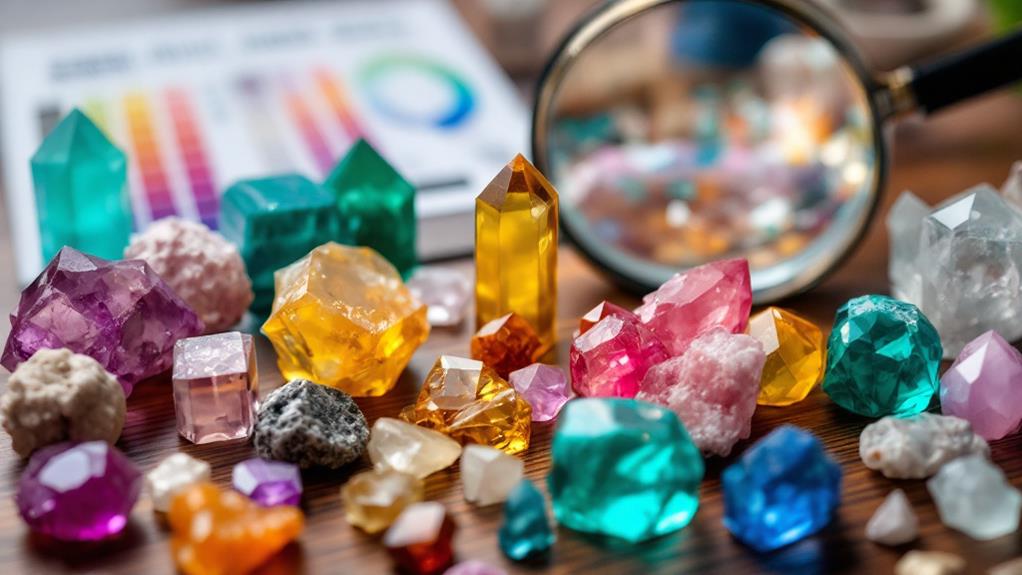
Identifying crystals accurately requires a combination of observation skills and scientific methods. You'll need to examine the crystal's physical properties, such as color, luster, hardness, and shape. Crystal structure analysis is indispensable for precise identification, as it reveals the internal arrangement of atoms. Using crystalline microscopy techniques, you can observe the crystal's surface features and growth patterns at a microscopic level.
To become proficient in crystal identification, follow these steps:
- Learn the basic properties of common crystals and their distinguishing characteristics.
- Practice using tools like streak plates, hardness picks, and hand lenses to test physical properties.
- Familiarize yourself with advanced techniques such as X-ray diffraction and spectroscopy for more complex identifications.
You can also use reference guides and online databases to compare your observations with known crystal types. Remember that some crystals may have similar appearances, so it's necessary to consider multiple factors when making an identification. With practice and patience, you'll develop the skills to confidently identify a wide range of crystals and minerals.
